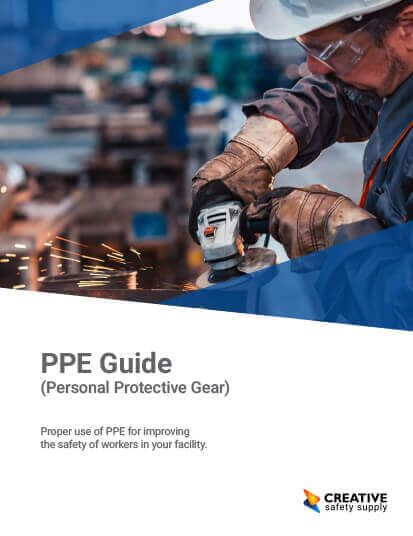
A spill in the workplace can cause a variety of hazards and risks to employees. Spilling chemicals or other corrosives pose an obvious threat, but spills also pose a slipping hazard. It is important for a facility to be prepared for a spill at any given moment, and for workers to understand the proper procedures that cleaning a spill effectively requires.
Spill clean-up first requires understanding the areas that are susceptible to spills, whether it is a harmless spill like water or the threat of a hazardous chemical spill. It is important to place spill kits in the areas that are at risk of a spill and to ensure the kit is appropriate for the possible spill. The kit itself will need to be placed in a container that can adequately hold the amount of liquid and type of liquid being cleaned up. This could be a plastic bin or a chemical drum ranging in gallon sizes from one gallon to 90 gallons, or whatever size your workplace needs. The next step is to guarantee the kit includes appropriate components for the spill on hand; this includes PPE, sorbents, and clean-up materials. The most common spill kits are a universal spill kit, a HazMat emergency spill kit, a PPE spill kit, and portable spill kits.
Another important part of spill clean-up is proper disposal of the spill and used spill kit contents. Improper disposal can result in a compromise to either the environmental health or public health, or even below. Check with local and state regulations to ensure hazardous materials are appropriately disposed of.
Aside from the contents of a spill kit, it is crucial to train employees on spill clean-up procedures. Make sure workers understand the potential dangers of the materials they are working with, how to use the contents of a spill kit, and what the proper procedure of clean-up and disposal is.
Similar Questions
- What are different types of spill kits?
- What does a universal spill kit contain?
- What does a spill kit usually always include?
- How do I choose the right spill kit for my facility?
- How many times can a spill kit be used?
- What is in a biohazard spill kit?
- Where should spill kits be located?
- What are the benefits of having spill kits?
- What are different absorbents used for spill clean-up?

